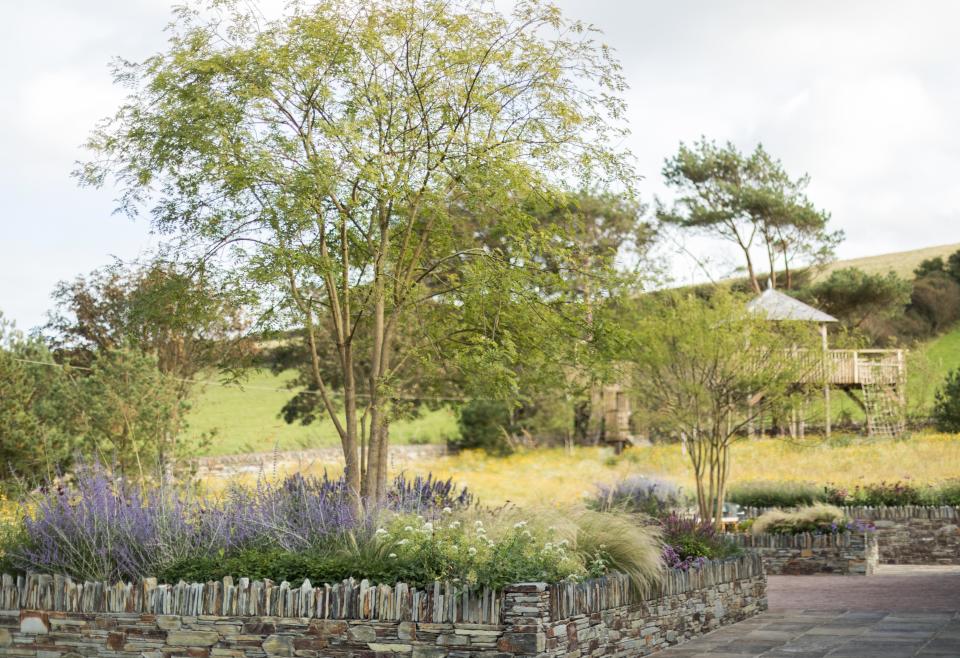Sam Ovens
WHY I DO WHAT I DO
I grew upon on a farm in the Cornish countryside, surrounded by nature and greenery. My parents’ garden was informal and slightly overgrown, and I had free rein to do what I wanted; my brother and I even dug a pond one summer. But I ended up studying product design, which is basically designing items for a throwaway culture, and it didn’t feel right. So I thought, wouldn’t it be great to design something that’s only going to get better with age, that will be here in a hundred years or more, instead of products that were only going to last five minutes? Suddenly it all clicked.
ROOTS
Studied product design at Cardiff University, then graduated in 2012 from Falmouth University with a degree in landscape design
INFLUENCES
Design inspiration you can find anywhere, but more important to me is understanding how plants grow and how to use them and combine them, and once you know that, you can begin planning what a garden will look like. Even if the design of a particular garden isn’t very interesting, it doesn’t matter, because I love the plants. I’ve always been drawn to the gardens of plantsmen like Gertrude Jekyll and Dan Pearson, and I always like to see how plants grown in the wild can be taken into a garden setting.

CAN’T LIVE WITHOUT
What makes landscape design so exciting is the plants, including two of my favorites, Euphorbia [spurge] and ornamental grasses. There are thousands and thousands of plants, and I can never know them all. There are always new varieties being bred, plants that will react differently in different places.
THOUGHT PROCESS
A garden should offer a different experience every time you go to see it. The ever-changing is what’s special. In my first show garden, I used field poppies that had gone over; you could only see the brown, dead seed heads. People see the value of skeletal plants in real-time gardens but that’s rarely seen in show gardens, but it’s one of the most exciting things about a landscape—what’s gone, and the anticipation of what’s going to flower next year.
IN PROGRESS
At the moment, I have about 20 projects on the books, from small little balconies in London—I’m literally talking about five meters square—to a country estate in Jersey, which is about 50 acres.
WHAT’S NEXT
Probably now more than ever before, what people want from a garden is a natural, everchanging, living, breathing thing, places where you can see what’s flowered, what’s going to flower, and what’s gone over. In the past, that wasn’t necessarily the case; you wanted a garden that looked manicured and pristine. All across the world, natural spaces are being depleted and that’s driving the change, I think. samovens.co.uk
Read more about the U.K.'s upcoming landscape stars.
Originally Appeared on Architectural Digest

